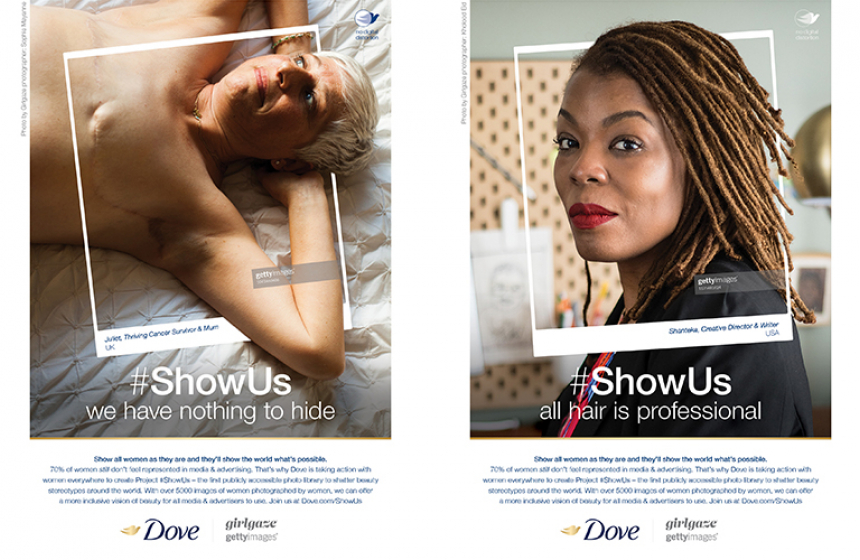
‘Subculture is the most powerful tool we have’
Louis Persent, Co-Founder and Creative Director at Weirdo on the power of embracing the niche

As new industry guidelines on gender stereotyping come into force, industry leaders explain why this is just the beginning.

Today marks a historic day for the UK advertising industry, as new guidelines banning gender stereotyping in advertising officially come into force. It’s the culmination of a journey which began in 2017, when the Advertising Standards Authority (ASA) announced plans to act on gender stereotypes, following the publication of a major review into gender stereotyping, Depictions, Perceptions and Harm.
The report, which was led by Ella Smillie, underlined a link between harmful stereotypes and restricting the choices, aspirations and opportunities of children, young people and adults. The guidelines give the industry tangible examples of what to avoid in advertising, focusing on six key areas: roles, characteristics, mocking people for not conforming to stereotyping, sexualisation, objectification and body image.
It followed the publication of a major research project from J. Walter Thompson New York and The Geena Davies Institute in the Media which analysed 2,000 ads and found that women in advertising are “humourless, mute and in the kitchen.” Women were almost half as likely (48%) than men to be depicted in the kitchen in advertising.
Yet the guidelines will equally shift the narrative and gender norms that have dominated the way men are depicted in advertising. It is hoped they will mark the end of ‘dadsplaining’ in advertising. For example, an ad featuring a man trying and failing to undertake a simple parental or household task will be banned.

Gilrgaze photographers © Sophie Mayanne © Kholood Eid
As well as having a negative impact on consumers’ mental wellbeing and sense of self, stereotyping also has a negative impact on business objectives. By failing to represent or recognise consumers, brands can find themselves operating in a highly distorted market in which entire swathes of the population are overlooked or under-represented.
According to research from UK by UM, over half (52%) of consumers believe that the LGBT+ community is invisible in advertising. The research also underlined the fact that the LGBT+ community is a much bigger percentage of the market than previously estimated. While ONS data suggests that 2% of the population is lesbian, gay or bisexual, its research reveals that in fact 26% of the population does not identify as straight, equating to a market of over 14 million people.
UK by UM research shows that two-thirds of those with physical disabilities believe society tries to “sweep them under the rug”. However, over half of all consumers (54%) want to see more people with physical disabilities in ads, while more than six in 10 (63%) consumers believe that seeing more disabled people in ads helps to remove the stigma around them.
In the midst of this fundamental cultural shift we asked a selection of industry leaders if the ASA’s ban on gender stereotyping is a watershed moment for the industry:
As advertisers, our role is not just to remove the bad, but to advance more progressive, modern and empowering characters that help to flip stereotypes on their head, challenge conventions and change culture for the better.
Aline Santos

This is a serious issue for the advertising industry. Outdated stereotypes and harmful social norms that our industry often perpetuates are hindering progress to gender equality. The ASA ban is an important step to helping stamp out regressive portrayals, but there is no silver bullet. Stereotypes vary from country to country and even differ from group to group within the same society. To address this complex and nuanced topic we need systemic change to happen within the companies that are creating advertising.
As advertisers, our role is not just to remove the bad, but to advance more progressive, modern and empowering characters that help to flip stereotypes on their head, challenge conventions and change culture for the better. The UN Women led Unstereotype Alliance is a coalition of companies that is aiming to achieve the eradication of stereotypes and seeks to advance positive portrayals of all people. We need both these actions to achieve the real change needed in society.
Dove found that 71% of women wish media and advertisers did a better job of portraying women of diverse physical attractiveness, including age, race, shape and size, a wakeup call to all media and advertisers.
Sophie Galvani

Dove found that 71% of women wish media and advertisers did a better job of portraying women of diverse physical attractiveness, including age, race, shape and size, a wakeup call to all media and advertisers. I commend the ASA for taking action on such an important subject. This is what we, together with our partners Shonda Rhimes, Getty Images and Girlgaze at Cannes and beyond are calling on brands to do with the launch of Project #ShowUs; to step-up and take responsibility for the images they use in their media and advertising.
Dove has been fighting beauty stereotypes for over a decade, but we felt that more had to be done. With the launch of Project #ShowUs we want to shatter beauty stereotypes on an unprecedented scale, because ultimately if we can change how the media represent women and non-binaries then we can help make a real impact. I am pleased that the ASA are setting a new standard of gender portrayal in advertising. For both men, women and non-binaries it is such an important change that is needed to ensure better representation of diversity across the board, and my hope is that brands will step up to this and together we will mark a new era of advertising for the long term good.
It is the executions that aren’t so obviously ‘wrong,’ the subtle gender stereotyping that goes unrecognised or undiscussed, that perhaps do the greatest disservice.
Jane Ostler

I think the ban is a good start, but it’s only one step along the way. It is the executions that aren’t so obviously ‘wrong,’ the subtle gender stereotyping that goes unrecognised or undiscussed, that perhaps do the greatest disservice. Our Getting Gender Right research shows that a large majority of marketers think they’re doing a good job with gender portrayals, but that many consumers disagree. Marketers need to step carefully, because every brand is different. They could go too far. For example, those with no history of purpose-led marketing will need to earn their stripes before they can start preaching to others. Key to success is navigating the grey area of subjectivity and interpretation, so doing early stage testing is vital.
Gender portrayals in creative are only a part of the issue, however. Our research also found that campaign targeting can be very stereotyped, particularly when it comes to household cleaning, laundry and baby products, so media agencies also need to think differently. And all of this has to be more than skin deep: you can’t pat yourself on the back about getting gender portrayals right if you have a massive gender pay gap in your company, no women on the board, or don’t offer paternity leave. Comprehensive progressiveness programmes should be embedded far beyond marketing.
We live in an age when extremism is on the rise in too much of our lives. Small acts like this help bring balance and fairness.
Mark Roalfe

Whether painting a limiting picture of women’s career or ignoring the role of fathers as carers, advertising has in the past sometimes helped to reinforce harmful gender stereotypes. So, June 14th should go down as a significant moment in the history of UK advertising. Because we all still need to work harder on our biases.
But there’s already a lot of evidence that agencies haven’t waited for any guidelines to challenge binary gender portrayal. Our team in Poland bought the country’s longest-running erotic magazine, Twój Weekend, and closed it down, opening a national debate on gender stereotypes. They ran a special final issue of the magazine which raised awareness of cultural issues such as sexual education, gender portrayal, equal rights, sexism and promoted diverse and progressive narratives of femininity.
Advertising can help shape culture and public opinions, which means brands and agencies have important responsibilities. David Ogilvy once said you should “never write an advertisement you wouldn’t want your own family to read.” This move from the ASA is a very welcomed step to make sure agencies and clients keep our “madmen” days well and truly behind us. We live in an age when extremism is on the rise in too much of our lives. Small acts like this help bring balance and fairness.
[We need to be] constantly open to new forms of positive representation, especially in how we choose to truthfully represent women’s experiences, even when they’re not immediately comfortable.
Sara Abaza

In a category where regulations have a direct correlation to how women are represented, it is important for regulatory bodies to strike the right balance between advertising standards and the truthful portrayal of women. Part of the reticence of the FemCare category to show menstruation and vulvas came from a long legal history of restricting “indecency” in advertising. When your category is about women’s intimate area, how can you embrace your responsibility to challenge harmful taboos if you’re not allowed to? By trying to challenge category conventions and what the public is comfortable seeing, we often find ourselves in a grey area.
We understand broadcasters’ role to shield the public from what could be offensive to them, but paradoxically, the good intention can sometimes end up inadvertently contributing to the opposite effect and feeding into existing taboos instead. Banning negative and harmful gender stereotypes and promoting more diverse representations of women is a huge step forward, but it’s also about being constantly open to new forms of positive representation, especially in how we choose to truthfully represent women’s experiences, even when they’re not immediately comfortable. That is what we are striving to do in all our campaigns, working with the ASA and other regulatory bodies around the world.
There are growing movements around being pan-sexual, non-binary and gender fluid. Creatives, this is your new brief.
Ali Hanan

Yes, this is a watershed moment. Now, whoever is the creative director, the fact is gender stereotyping is now 'officially' off creative limits. In a few decade's time, when we look back on gender-stereotyping work retrospectively, it will feel like those 1980s' smoking ads. While at the time, smoking seemed so alluring, we know now it's a 'killer'. These ads had a damaging impact on society and the health of a whole generation. We moved on. Equally we know how damaging stereotyping is for young girls and boy, men and women. In an age of #BelieveHer, #MeToo and #YouKnowHer, the zeitgeist is demanding change, and it's finally, here. And, without these constraints so many other creative possibilities begin to open up. A new generation is growing up who don't want to be constrained by traditional notions of gender and sexuality.
Our point of view is we'd never have had to legislate for this if we'd had women and non-binary creatives shaping work in the first place. The fact is for the last two decades, men (mainly white, straight males) have dominated creativity. As the majority, their humour, point of view, their fantasies and biases have played out in creative work, which is why this legislation exists. So, while this is timely, the fact is we still have a long way to go to change the diversity of the teams who make the work, which is why our Equality Standard exists. We give companies their change 'map', and for all aspects of diversity. Bring on more companies who gain the Equality Standard; that's where the real work has to be done.
There are growing movements around being pan-sexual, non-binary and gender fluid. Creatives, this is your new brief. And, we can't stop at gender. We need to go beyond and look deeply at other kinds of stereotypes, around race, age, disability, neurodiversity, faith, LGBTQI and all the intersections between. Right now, with our fragmented, polarised society, advertising has the power to shape an inclusive world, for everyone.
It is important to find a balance between the rights of people not to be subjected to offensive stereotypical depictions and the rights of businesses to advertise their products and services.
Nigel Vaz

The introduction of the rule marks an important moment for the industry as it demonstrates a public commitment to taking seriously the issue of gender portrayals in advertising. Responsibility is one of the key strands of my Reimagine agenda as IPA President; this includes a responsibility to ensure that advertising is representative of the world we live in and builds trust between brands and consumers. This, of course, includes not perpetuating negative or harmful stereotypes. However, even with an issue of this sensitivity, it is important to find a balance between the rights of people not to be subjected to offensive stereotypical depictions and the rights of businesses to advertise their products and services.
While the IPA welcomes the new rule, it is important to note that the ASA report, Depictions, Perceptions and Harm, which led to the creation of the new rule, makes clear that “the overwhelming majority of ads do not include gender stereotypes that are likely to cause harm or serious or widespread offence” and that the problem is not endemic in our industry. We do, of course, support the new rule because it clarifies that harmful stereotypical depictions in ads are not acceptable. But we should take care to ensure that it does not lead to unintended, damaging consequences, such as the stifling of creativity, the encouragement of detrimental characteristics or behaviour, or even the creation of new stereotypes, something that we made clear in our response to the consultation on the new rule.
Looks like you need to create a Creativebrief account to perform this action.
Create account Sign inLooks like you need to create a Creativebrief account to perform this action.
Create account Sign in